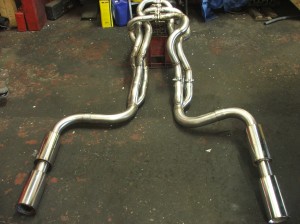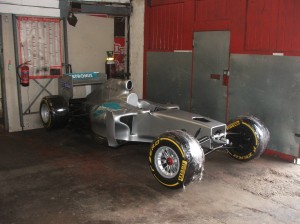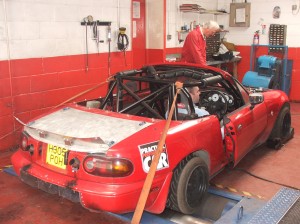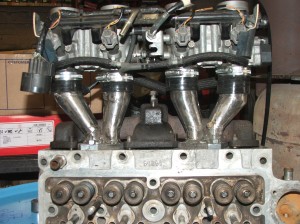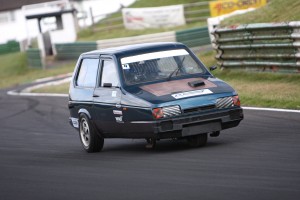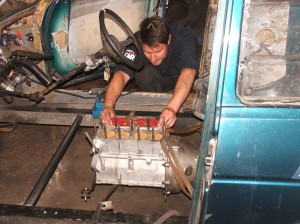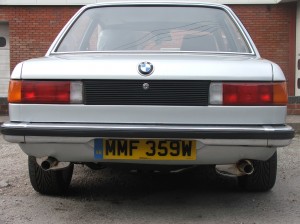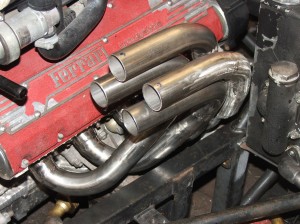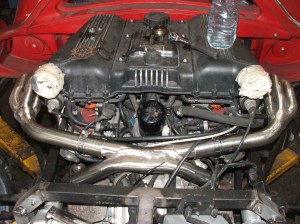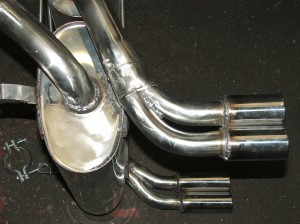In between jobs we’ve been working on some new manifolds for our Capri Race car. Proper exhaust manifolds take a long time to make but there’s a lot of calculations to make before the welding begins. Race manifolds need to take into account all sorts of details about the design of the engine, head, valves, cams and even the gear ratio’s and rolling road power plot. Once all of that is taken into consideration the work can begin. You can see from the picture how much is involved with getting so much tube wrapped around the engine bay. The power gains are well worth it though.
Archive for the ‘News’ Category
Capri Exhaust manifolds
Friday, October 5th, 2012Schumacher drops in
Tuesday, August 14th, 2012Michael Schumacher dropped by with his F1 car recently so we could give it a service and do the tracking. We Wish! This is our F1 simulator and show car which is normally out and about at shows. the transporter had to go for repairs so the car lived in the corner of the garage for a few days. It just looks so cool we had to put a picture of it on the blog.
MX5 at the rolling road
Tuesday, August 14th, 2012Robin Returns
Tuesday, August 14th, 2012After test runs at Santa Pod the Robin hit the track at Mallory Park. With it’s suspension upgrades the grip was so good we upped the boost and timing slightly for more power. About 3 laps later the headgasket blew, it was fairly inevitable. After the Nissan Deltawing was so successful in this years Le Mans we opted to take the Robin project to the next level. The Robin already uses many similar principals to the Deltawing but until now has used a different concept for weight distribution. The whole car is coming apart again to have a massive rearward shift designed into the weight balance. The engine will get more power and better cooling. 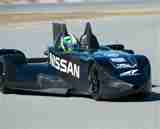
Free Fuel for Stafford Forum
Wednesday, May 2nd, 2012In December of 2011 a rogue satisfied customer created a post for AA Silencers on Stafford Forum. Generally I’m not big into forums as common theme forums (cars, racing etc) tend to be a bit inwardly focussed. It can sometimes get a bit of a shouting match over who knows the most. The other side to our job at AA Silencers isn’t about the cars, but about the people who drive them. Knowing you’ve served people well and being able to reach them is wonderful. Stafford forum brings the local community through the door and right there onto your computer screen. I was blown away that the people in our community would take their own time to start a thread about us and keep on posting such kind comments. Knowing that we’ve helped people makes the grazed knuckles and hammered fingers worth while. Because of that we’ve decided to give something back to the Stafford Forum members. When any member of Stafford Forum has had their car worked on at AA Silencers all they need to do is fill out a Good Garage Scheme feedback form (available on request). Each month we’ll draw one feedback form out of the hat and contact that person on Stafford Forum. If you fill one out be sure to leave your forum username on the feedback form so we can get in touch. The winner will receive a tank of fuel up to a maximum value of £50. Maybe that’s not a whole tank of fuel for some cars but it’ll keep people on the road for a week or two. Every little helps and it’s our way of saying to our community- Thank you.
It’s what we do- excerpt from an article for Practical Performance Car magazine
Friday, April 27th, 2012It’s strange that the first question people ask when they’re checking out modified cars is often ‘How much power has it got?’ It’s all well and good being able to say it’s got 400 bhp, but how much weight is that power having to shift? If the car weighs two tonnes then you’ve only got 200 bhp per tonne, which is suddenly less impressive. That’s only equal to a 100 bhp engine in a 500 kg car. The thing is if you tell people you’ve only got 100 bhp they’ll snigger and walk away. ‘Pfff, my Mom’s Corsa has got more power than that’. The conversation’s over before anyone mentions weight.
Weight goes far beyond the simple bhp/tonne figure though. Bigger engines will often produce more than enough power to compensate for their extra weight. Carrying a hoofing great engine around does nothing for the handling though. The overall weight of a car will make a huge difference to how it accelerates, brakes and turns into a corner. The distribution of the weight in the car is just as important and can be used to either tune or ruin the handling characteristics.
It’s fairly obvious that having a light car means you can accelerate and brake faster, there’s less weight to move around. But just as important is how the weight is spread out across the cars tyres. Each tyre is actually holding up a different weight. In most road cars with the engine up front, the front tyres are holding up a lot more weight than the rears. Likewise with only the driver in, the off side tyres are carrying more weight than the nearside. Amongst other things, the amount of weight (or down force) a tyre has on it will dictate how much grip it can produce, up to a point. From that you could think a heavier car could corner faster. The problem is that the cars weight also acts sideways in a corner and it takes some of the available grip of the tyre and pulls it sideways, causing the tyre to ‘scrub‘. All tyres scrub sideways when turning, it’s known as the slip angle. Push the slip angle too far and you’re sliding, push the slide too far and you’re spinning. Heavier cars increase slip angles faster than light ones so they run out of grip faster.
To help ensure each tyre is carrying an equal load to start with, cars can be corner weighted. That involves raising the spring heights so more load goes onto the corners where there was less. Unless you have a very well balanced car the weight distribution will always be biased in one direction or another, but it helps to spread the cars weight as evenly as possible. This means each tyre is doing it’s fair share of clinging your car to the road. Corner weighting a car doesn’t necessarily move the weight distribution in the car, it just alters how the car’s suspension supports it.
Of course all that talk of spreading the weight out on the tyres is massively over simplified. There’s so many other factors influencing how the car’s suspension behaves, and all we’ve considered so far is how the weight is supported across the four corners. We should also spare a thought for where the weight is in the car. Rather than just say the car has weight, the weight distribution around the car can all be added up and said to have a centre of gravity. It’s basically the balance point for all the weight in the car. If the car was hung from a rope attached at the centre of gravity it would always be balanced. The centre of gravity also has a height within the car. The higher the centre of gravity the more a car will lean as it corners. It leans, or rolls because opposing forces act on the centre of gravity as you corner. It’s those forces you can feel when you are pushed out of your seat as the car brakes or corners. This is called weight transfer. The more it rolls during a corner the more it takes load off the inside tyres reducing the overall grip available to the car.
The centre of gravity rolls around a pivot point called its roll centre, which is set by the cars suspension pick up points. Unless you’re planning on moving the suspension pick up points the best way to reduce the amount of roll a car has is make it lighter and get the weight as low down in the car as possible. Stiffer suspension springs will resist body roll. Generally you’ll always want the softest springs possible for traction but stiff enough to stop too much weight transfer. Assuming your tyres are up to the job of transmitting the load then sometimes a bit more weight transfer in a straight line (pitch) helps push them into the road surface and get more grip. For example if you have a rear wheel drive car with the engine at the front you’ll need a bit of weight transfer to get the driving tyres to grip properly. Generally though too much weight transfer reduces grip and ruins the balance in the car, especially during cornering (roll). It’s that balance that everyone’s trying to find when they set a car up. How much weight your car has and where it’s distributed will affect how much weight transfer you have, how much work your suspension is having to do and so how hard you can push your tyres when accelerating, braking and cornering. Performance driving techniques are all developed around shifting the balance around the tyres to get the best grip for the longest time. It’s all of these factors and more that we focus on when developing a car, and it’s driver.
MX5 Hillclimb car
Friday, April 27th, 2012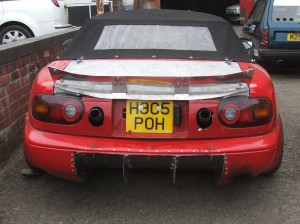 We’ve been building this hillclimb car for Practical Performance Car Magazine. The full details of the build will be available to read over the next few months. PPC mag have an event called the 999 challenge. The idea is to build the best MoT passable car you can for 999 quid and carry out a timed quarter mile and handling course. The fastest car wins. We decided to take the concept a step further and see if we could build a hill climb car for full competition still sticking to the 999 pound budget. The list of modifications is massive. We reduced the weight by about 20% which is hard going on a car that’s so light to start with. With all the weight stripped out we built a cage that not only keeps the driver safe but adds to the shells rigidity. The engine received a turbo and anti lag system including launch control and flat shift. It also features a hydrogen gas system for better combustion and a cold water spray for the intercooler. We carried out a few suspension and brake modifications and thoroughly set the cars geometry to give it perfect handling. The aerodynamics were last to be addressed and are controlled tightly by the regulations. We designed an aero package that other than the allowed rear spoiler didn’t change the cars silhouette. We achieved this with a flat underfloor, undercut splitter and a rear diffuser than uses a cut out into the rear bumper. The rear aero is fed by the exhaust gases between the spoiler and the diffuser which aid flow attachment. There’s still some fine tuning to be done but it should be an awesome package on a very tight budget
We’ve been building this hillclimb car for Practical Performance Car Magazine. The full details of the build will be available to read over the next few months. PPC mag have an event called the 999 challenge. The idea is to build the best MoT passable car you can for 999 quid and carry out a timed quarter mile and handling course. The fastest car wins. We decided to take the concept a step further and see if we could build a hill climb car for full competition still sticking to the 999 pound budget. The list of modifications is massive. We reduced the weight by about 20% which is hard going on a car that’s so light to start with. With all the weight stripped out we built a cage that not only keeps the driver safe but adds to the shells rigidity. The engine received a turbo and anti lag system including launch control and flat shift. It also features a hydrogen gas system for better combustion and a cold water spray for the intercooler. We carried out a few suspension and brake modifications and thoroughly set the cars geometry to give it perfect handling. The aerodynamics were last to be addressed and are controlled tightly by the regulations. We designed an aero package that other than the allowed rear spoiler didn’t change the cars silhouette. We achieved this with a flat underfloor, undercut splitter and a rear diffuser than uses a cut out into the rear bumper. The rear aero is fed by the exhaust gases between the spoiler and the diffuser which aid flow attachment. There’s still some fine tuning to be done but it should be an awesome package on a very tight budget
classic BMW under renovation
Friday, April 27th, 2012 After having a mad run on modern BMW’s wanting Diesel Particulate Filter (DPF) removals we had this little classic come through the door. The owner was taking the time to bring the car to date as he carried out a rolling restoration. Items such as Poly bushes in the suspension, uprated brakes and an air-conditioning unit are all either done or being done. This type of gentle modernisation is a speciality of ours and is the ultimate in recycling. You can drive around in a beautiful car which can keep up with modern traffic whilst knowing you’ve saved the planet by avoiding another car going on the scrap heap. Our part was a simple stainless steel exhaust build. The customer wanted a little more noise but nothing excessive. We kept the number of boxes to a minimum as this helps reduce the cost too. We look forward to seeing the cara again when it’s completed.
After having a mad run on modern BMW’s wanting Diesel Particulate Filter (DPF) removals we had this little classic come through the door. The owner was taking the time to bring the car to date as he carried out a rolling restoration. Items such as Poly bushes in the suspension, uprated brakes and an air-conditioning unit are all either done or being done. This type of gentle modernisation is a speciality of ours and is the ultimate in recycling. You can drive around in a beautiful car which can keep up with modern traffic whilst knowing you’ve saved the planet by avoiding another car going on the scrap heap. Our part was a simple stainless steel exhaust build. The customer wanted a little more noise but nothing excessive. We kept the number of boxes to a minimum as this helps reduce the cost too. We look forward to seeing the cara again when it’s completed.
Signum Silencers
Tuesday, November 29th, 2011We’ve done loads of these V6 signums now, and pound for pound they must be the best exhaust to do. The car should have 2 huge boxes at the back but without them the exhaust isn’t loud, it just has a nice growl to it. The back boxes go in the bin and we build some simple pipework with the customers choice of tips. Good looking, great sound and really cheap as there’s not much involved. Everyone’s a winner.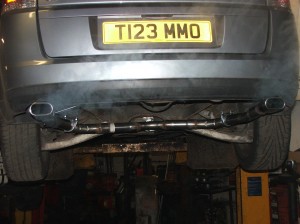
Ferrari Jigsaw
Thursday, September 8th, 2011
This Ferrari P6 kit came to us for an exhaust build. The engine is from a 355 so I think it’s fair to say it’ll be loud. The problem is the car needs to meet the IVA compliance of 99db and have catalytic converters. the engine needs to breath freely though matched length primary headers and have it’s secondary air system, temperature sensors and lambdas included. The customer also wanted quad tips and a cross over adding, all in the space of about 3 feet and without fouling the closely fitting body. That’ll all add up to a challenge then. We just about squeezed it all in there, the pictures speak for themselves. The finished article looks beautiful but as the car is incomplete we couldn’t check the noise levels. we’ll continue to work with the customer though until his creation is on the road.

